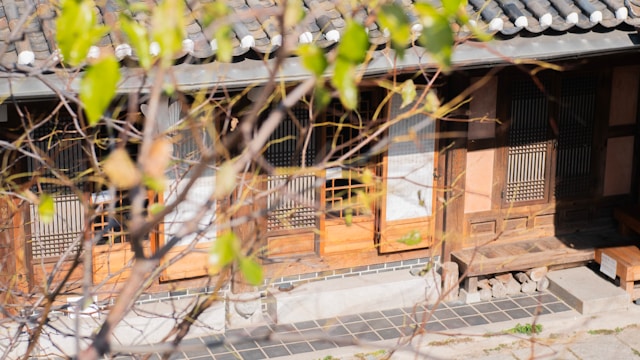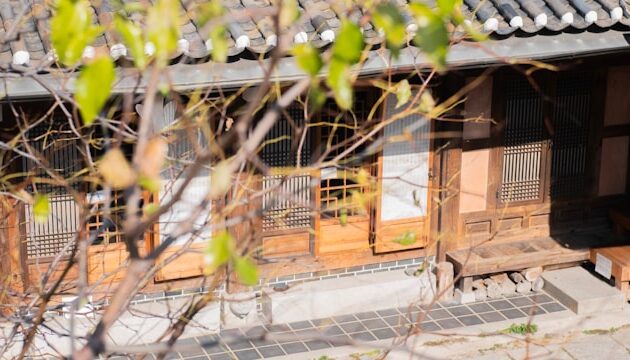
Seoul, South Korea’s dynamic capital, is often recognized for its towering skyscrapers, buzzing nightlife, and world-class technology. However, nestled within this metropolitan marvel are pockets of serene nature escapes that offer a much-needed reprieve from urban chaos. These hidden gems blend history, culture, and breathtaking landscapes, allowing residents and tourists to experience a harmonious balance of modernity and tranquility. Below, we explore the finest nature retreats that lie within Seoul’s boundaries, offering an unmatched glimpse into the city’s natural charm.
1. Bukchon Hanok Village: A Timeless Urban Oasis

Bukchon Hanok Village is more than a historical site; it’s a testament to Seoul’s architectural elegance amidst its bustling neighborhoods. This village, featuring traditional Korean houses known as hanoks, is surrounded by tranquil gardens and offers stunning views of the city’s modern skyline juxtaposed with ancient structures.
Take a leisurely walk along narrow pathways lined with hanoks and enjoy the peaceful environment that contrasts sharply with Seoul’s fast-paced streets. Be sure to visit nearby Gyeongbokgung Palace and Changdeokgung Palace to further immerse yourself in Korea’s rich cultural heritage.
2. Bukhansan National Park: A Hiker’s Paradise
Located on the northern edge of Seoul, Bukhansan National Park is a haven for nature enthusiasts and hikers. The park boasts granite peaks, lush valleys, and ancient Buddhist temples, offering breathtaking vistas from every angle. Popular trails such as Baegundae Peak are perfect for experienced hikers, while easier routes cater to beginners.
Seasonal changes transform Bukhansan into a spectacle of colors, from vibrant greens in summer to fiery reds and oranges in autumn. With its proximity to the city center, it’s an ideal destination for day trips.
3. Seonyudo Park: Seoul’s Hidden Island Retreat
Seonyudo Park, situated on the Han River, is one of Seoul’s best-kept secrets. This eco-park was built on a former water treatment facility and now serves as a peaceful escape for families, couples, and solo adventurers.
The park’s lush vegetation, water-themed exhibits, and walking paths make it a delightful spot to unwind. Visitors can also enjoy panoramic views of the Han River, making it a prime location for photography enthusiasts.
4. Yangjae Citizens’ Forest: Serenity in Southern Seoul
If you’re seeking a quieter alternative to Seoul’s popular parks, Yangjae Citizens’ Forest is your answer. This expansive forest is a sanctuary of peace, featuring well-maintained trails, picnic spots, and a variety of native flora and fauna.
Ideal for joggers, walkers, and families, Yangjae Citizens’ Forest offers shaded paths and vibrant seasonal blooms. Its accessibility from southern Seoul neighborhoods makes it a convenient choice for residents and visitors alike.
5. Namsan Seoul Tower: A Nature-Lover’s Perspective
While the Namsan Seoul Tower is a popular tourist attraction, the lush surroundings of Namsan Mountain often go unnoticed. Namsan Park provides a picturesque environment with winding trails leading to the iconic tower.
Whether you hike up the mountain or take the cable car, you’ll be treated to panoramic views of the cityscape and glimpses of native wildlife. The park is especially enchanting during cherry blossom season, drawing photographers and nature lovers from all over.
6. Haneul Park: A Sky-High Grassland Escape
Part of the World Cup Park complex, Haneul Park (meaning “Sky Park”) is a reclaimed landfill turned into a thriving grassland haven. Known for its tall silver grass fields and expansive open spaces, it offers a unique natural escape just minutes from downtown Seoul.
Visitors can climb a series of wooden staircases or take a shuttle to reach the top, where they are rewarded with spectacular views of the Han River, Bukhansan Mountain, and the city skyline. Haneul Park is especially popular during the autumn months when the grass fields turn golden, creating a dreamlike landscape.
7. Cheonggyecheon Stream: Urban Nature at Its Best
Running through the heart of downtown Seoul, Cheonggyecheon Stream is a perfect example of urban rejuvenation. This 11-kilometer-long stream provides a refreshing contrast to the surrounding skyscrapers and busy streets.
The walking paths along the stream are lined with greenery, waterfalls, and art installations. At night, the illuminated pathways create a romantic atmosphere, making it a favorite spot for couples and evening strollers.
8. Seoul Forest: A Multifaceted Green Haven
Seoul Forest is a sprawling park complex located in Seongsu-dong, offering a variety of experiences for nature enthusiasts. Divided into five themed zones, including an ecological forest, cultural arts park, and wetlands, this destination caters to all age groups.
The forest is home to deer, butterflies, and other wildlife, adding to its charm. It’s also a hub for cultural events, making it a lively yet relaxing destination.
9. Inwangsan Mountain: A Hidden Spiritual Retreat
Inwangsan Mountain is a lesser-known hiking spot that boasts not only natural beauty but also spiritual significance. The mountain features shamanic shrines, Buddhist temples, and ancient fortress walls.
The trails offer breathtaking views of the city, particularly at sunrise or sunset. Inwangsan is an excellent choice for those seeking a quieter, more meditative experience compared to Seoul’s busier hiking destinations.
10. Ilsan Lake Park: Beyond Seoul’s City Limits
While technically located in Goyang, a suburb of Seoul, Ilsan Lake Park is a must-visit for nature lovers. As one of the largest artificial parks in Asia, it features a massive lake surrounded by walking and cycling paths, themed gardens, and open-air performance venues.
The park is especially vibrant during spring and autumn, when cherry blossoms and colorful foliage attract visitors in droves.
Seoul’s hidden nature gems offer something for everyone, from serene forest trails to urban green spaces. Whether you’re a resident or a tourist, these destinations provide a refreshing escape from the city’s hustle and bustle while showcasing the harmonious coexistence of nature and urban life.